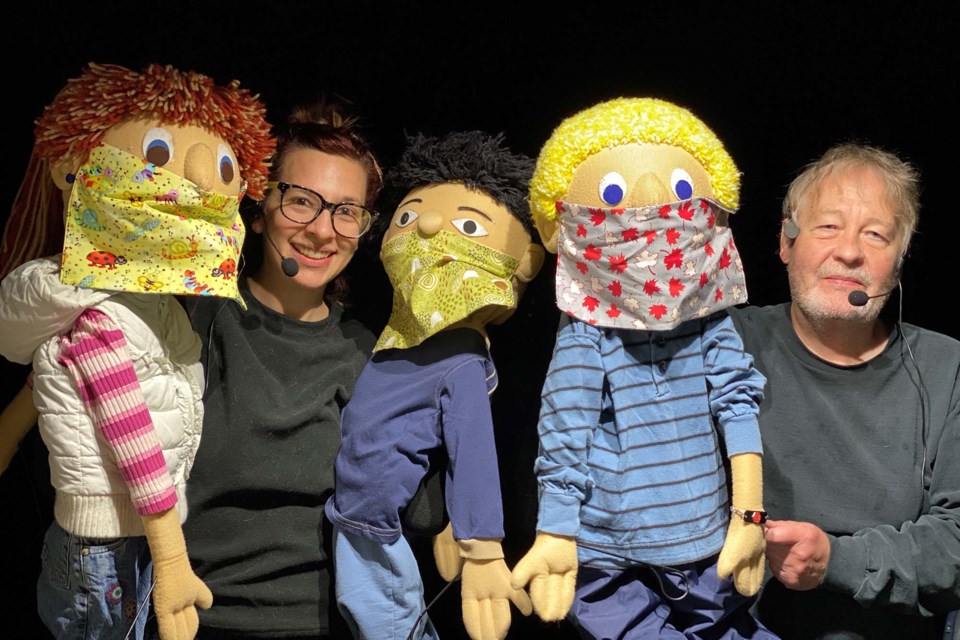Children with epilepsy often face numerous personal challenges. There is the fear of repeatedly dealing with the physical effects of seizures, side effects from medication, and depression as well as learning and/or cognitive difficulties. And finally, there is the fear of peer rejection and social stigma.
That is a huge physical, emotional, and psychological burden for a child to carry. But they are not alone.
The Edmonton Epilepsy Association purchased a copyright to Kids on the Block, a puppet show that introduces Brian McDaniel, an 11-year-old boy who copes with seizures. The puppet show runs at the International Children’s Festival of the Arts from June 2 to 5 at St. Albert Public Library, Forsythe Hall.
Kids on the Block works to empower individuals dealing with fear, stigmas, teasing, and bullying. The show’s goal is to give children tools so they will feel safe, accepted, and supported. In addition, it offers onlookers ways of dealing with an unexpected episode.
Valeria Palladino, the association's executive director, said that while epilepsy is the fourth most common neurological disorder in the world, it is the “first” most common in children. Roughly one in 100 people develop epilepsy. Based on a one-per-cent estimate, about 380,000 Canadians have epilepsy.
“Fortunately, many grow out of it — 50 to 60 per cent will grow out of it. Not all seizures are from epilepsy. If you have a seizure from a high fever, that is not considered epilepsy. Epilepsy is defined by multiple seizures. You must have two unprovoked seizures and there are over 40 types of seizures,” said Palladino.
As executive director, she heavily promotes Kids on the Block as an educational resource that makes it easy to learn and ask questions at a Q & A following the production.
“It’s positive and educational in building understanding. What we find most useful are the questions at the end. By asking a puppet questions, children feel very safe."
Rabbi Barbara Aiello first developed Kids on the Block scripts in 1977 when the U.S. government passed a bill to expand inclusivity in schools, explained Palladino. Aiello structured the 45-minute scripts adapting the ancient Japanese puppetry form of Bunraku. The puppets are taller than a metre, hand-held, and rod-manipulated by puppeteers dressed from head to toe in black. The focus is completely on the puppets.
The association purchased the copyright to two scripts 17 years ago and has promoted them heavily in school settings. Kids on the Block debuts its first out-of-school show at the festival in the hopes of reaching a wider audience.
Darrel Stephenson, a freelance Edmonton actor who has amassed experience in film projects, radio, murder mysteries for corporate events, and medical projects, has voiced the lead character, Brian, since its inception. Two other actors lending their talents as school buddies are Demmi Connolly and Anthony Hunchak.
“The last two years we haven’t gone into schools due to the pandemic. Everything was done virtually online. It’s OK, but there is better interaction, better communication when it’s live. When you’re live, kids can come up after the show and ask questions without being embarrassed in front of their classmates,” said Stephenson.
Some may feel there’s a smidgen of disconnect when a grown man voices a Grade 5 student. However, Stephenson has borrowed techniques from some of the best animators and puppeteers, namely Mel Blanc (the voice of Bugs Bunny) and Daws Butler of Hanna-Barbera Productions.
“I don’t do voices. I do characters. Brian is an 11-year-old boy. He’s very real and has a very real problem. He’s not a puppet. He’s a character,” Stephenson explained.
But all the work is worth it when actors hear rustles and giggles coming from a live audience.
“When you hear the sound of a hundred kids moving into the audience, you’re jacked. The audience gives a performer feedback. It’s give and take. If the audience likes what you do, you can give more to them.”
All performances are free and drop-in only. Scheduled performances are listed on the website at www.stalbert.ca and posted at the festival site.




